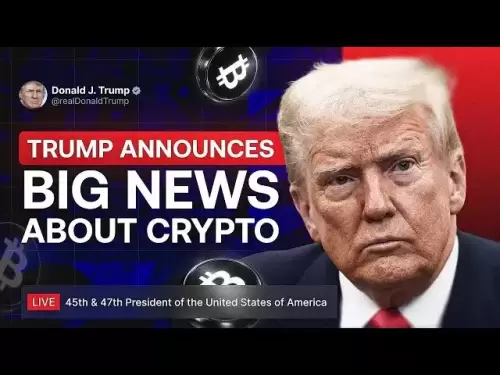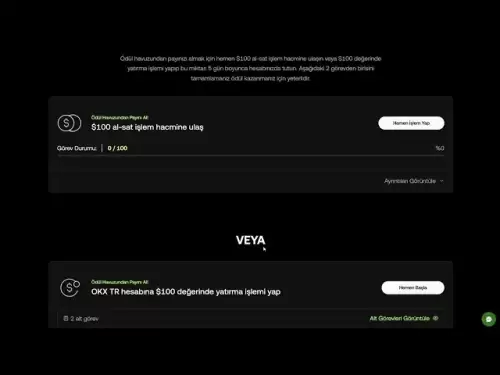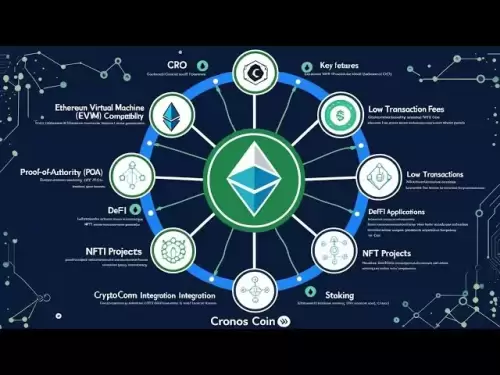-
 Bitcoin
Bitcoin $119300
1.07% -
 Ethereum
Ethereum $3730
3.87% -
 XRP
XRP $3.235
0.29% -
 Tether USDt
Tether USDt $1.000
0.00% -
 BNB
BNB $783.5
1.88% -
 Solana
Solana $188.7
0.25% -
 USDC
USDC $0.0000
-0.01% -
 Dogecoin
Dogecoin $0.2399
-0.44% -
 TRON
TRON $0.3157
2.37% -
 Cardano
Cardano $0.8254
1.94% -
 Hyperliquid
Hyperliquid $42.83
0.14% -
 Stellar
Stellar $0.4372
3.21% -
 Sui
Sui $3.859
4.91% -
 Chainlink
Chainlink $18.53
3.53% -
 Hedera
Hedera $0.2464
0.01% -
 Bitcoin Cash
Bitcoin Cash $519.8
2.46% -
 Avalanche
Avalanche $24.24
2.17% -
 Litecoin
Litecoin $113.7
0.73% -
 UNUS SED LEO
UNUS SED LEO $8.990
0.30% -
 Shiba Inu
Shiba Inu $0.00001390
0.21% -
 Toncoin
Toncoin $3.188
1.49% -
 Ethena USDe
Ethena USDe $1.001
0.02% -
 Polkadot
Polkadot $4.090
-0.91% -
 Uniswap
Uniswap $10.40
4.08% -
 Monero
Monero $326.6
3.12% -
 Bitget Token
Bitget Token $4.627
-0.42% -
 Pepe
Pepe $0.00001281
0.76% -
 Dai
Dai $1.000
0.01% -
 Aave
Aave $291.6
0.98% -
 Cronos
Cronos $0.1269
7.26%
How to sell AVAX and withdraw to a bank card?
To sell AVAX and withdraw to a bank card, choose an exchange like Binance or Coinbase, deposit AVAX, sell for fiat, and withdraw to your card, monitoring the transaction closely.
Apr 20, 2025 at 11:35 am
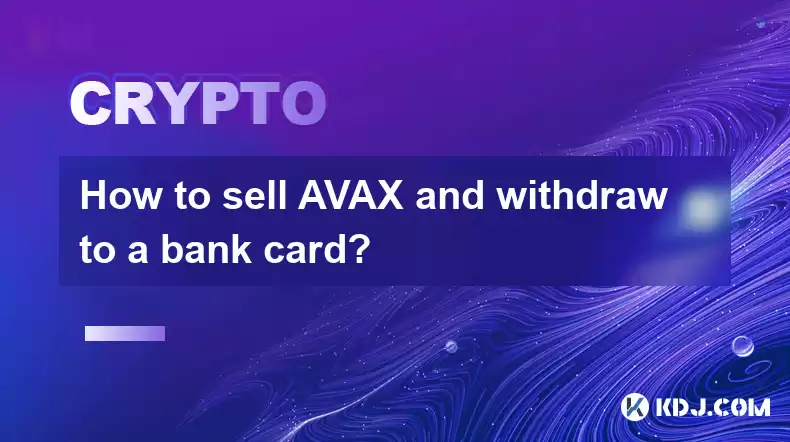
Selling AVAX and withdrawing the funds to a bank card involves several steps that need to be carefully followed. This process typically involves using a cryptocurrency exchange that supports AVAX and allows withdrawals to bank accounts. Let's break down the process into detailed steps.
Choosing a Suitable Exchange
The first step in selling AVAX and withdrawing to a bank card is to choose a suitable exchange. Not all exchanges support AVAX, and not all of them allow withdrawals to bank cards. Some popular exchanges that support AVAX and offer bank withdrawal options include Binance, Coinbase, and Kraken.
- Visit the exchange's website and check if they support AVAX trading and bank withdrawals. Ensure the exchange is reputable and has good security measures in place.
- Create an account if you don't already have one. You'll need to provide personal information and complete a KYC (Know Your Customer) process, which typically involves submitting a government-issued ID and possibly a proof of address.
- Enable two-factor authentication (2FA) to secure your account further. This is a critical step to protect your funds.
Depositing AVAX into the Exchange
Once you have chosen and set up an account on a suitable exchange, the next step is to deposit your AVAX into the exchange's wallet.
- Navigate to the deposit section of the exchange. Look for the option to deposit AVAX.
- Generate a deposit address for AVAX. This is a unique address that you will use to send your AVAX from your personal wallet to the exchange.
- Copy the deposit address and go to your personal AVAX wallet.
- Initiate a transfer of your AVAX to the exchange's deposit address. Ensure you enter the correct address to avoid losing your funds.
- Wait for the transaction to be confirmed on the Avalanche blockchain. This can take anywhere from a few minutes to an hour, depending on network congestion.
Selling AVAX for Fiat Currency
After your AVAX has been successfully deposited into the exchange, you can proceed to sell it for fiat currency.
- Navigate to the trading section of the exchange. Look for the AVAX trading pair with the fiat currency you wish to withdraw to your bank card, such as AVAX/USD or AVAX/EUR.
- Place a sell order for your AVAX. You can choose between a market order, which sells your AVAX at the current market price, or a limit order, which allows you to set a specific price at which you want to sell.
- Confirm the sell order and wait for it to be executed. Once the order is filled, the equivalent amount of fiat currency will be credited to your exchange wallet.
Withdrawing Fiat to a Bank Card
The final step is to withdraw the fiat currency from the exchange to your bank card.
- Navigate to the withdrawal section of the exchange. Look for the option to withdraw to a bank card.
- Enter your bank card details. This may include your card number, expiration date, and the name on the card. Ensure all details are correct to avoid any issues with the withdrawal.
- Specify the amount you wish to withdraw. Be aware of any withdrawal fees and minimum withdrawal amounts that the exchange may have.
- Initiate the withdrawal. The exchange will process the withdrawal, and the funds should appear in your bank account within a few business days, depending on your bank's processing times.
Verifying and Monitoring the Transaction
It's important to verify and monitor the transaction to ensure everything goes smoothly.
- Check your exchange account to confirm that the withdrawal has been processed successfully.
- Monitor your bank account for the incoming funds. If the funds do not appear within the expected timeframe, contact your bank to inquire about any potential issues.
- Keep records of your transactions, including the withdrawal request and any confirmation emails from the exchange. These can be useful for troubleshooting or for tax purposes.
Handling Potential Issues
Sometimes, issues can arise during the process of selling AVAX and withdrawing to a bank card. Here are some common problems and how to address them:
- Withdrawal delays: If your withdrawal is taking longer than expected, first check the exchange's withdrawal processing times and then contact their customer support for assistance.
- Rejected withdrawals: If your withdrawal is rejected, ensure that your bank card details are correct and that you have not exceeded any withdrawal limits. Contact the exchange's support team for further assistance.
- Transaction fees: Be aware of any fees associated with selling AVAX and withdrawing to a bank card. These can vary between exchanges and can impact the final amount you receive in your bank account.
Frequently Asked Questions
Q: Can I sell AVAX directly to a bank card without using an exchange?
A: No, you cannot sell AVAX directly to a bank card without using an exchange. You need to use a platform that supports AVAX trading and allows withdrawals to bank accounts.
Q: Are there any limits on how much AVAX I can sell and withdraw to a bank card?
A: Yes, exchanges often have withdrawal limits that can vary based on your account verification level and the exchange's policies. Check the specific limits on the exchange you are using.
Q: How long does it take for the funds to appear in my bank account after withdrawal?
A: The time it takes for funds to appear in your bank account can vary, typically ranging from 1 to 5 business days, depending on the exchange and your bank's processing times.
Q: What should I do if my bank card withdrawal is declined?
A: If your bank card withdrawal is declined, first ensure that your card details are correct and that you have not exceeded any withdrawal limits. If the issue persists, contact the exchange's customer support for assistance.
Disclaimer:info@kdj.com
The information provided is not trading advice. kdj.com does not assume any responsibility for any investments made based on the information provided in this article. Cryptocurrencies are highly volatile and it is highly recommended that you invest with caution after thorough research!
If you believe that the content used on this website infringes your copyright, please contact us immediately (info@kdj.com) and we will delete it promptly.
- Bitcoin, Jim Cramer, and the US Deficit: A Wall Street Story
- 2025-07-25 10:30:11
- TGEs, Scalability & Privacy Tech: Decoding the Future of Blockchain
- 2025-07-25 10:30:11
- Ben Askren, FUNKY Memecoin, and the Fallout: A New York Minute
- 2025-07-25 10:50:11
- TRON, Crypto Payroll, and Stablecoins: A New York Minute on the Future of Finance
- 2025-07-25 08:30:11
- WazirX, Revote, and Crypto Unlock: A New York Minute on the Latest Developments
- 2025-07-25 06:50:11
- Hong Kong Stablecoin Regulation: Navigating the Hype and Hurdles
- 2025-07-25 08:30:11
Related knowledge
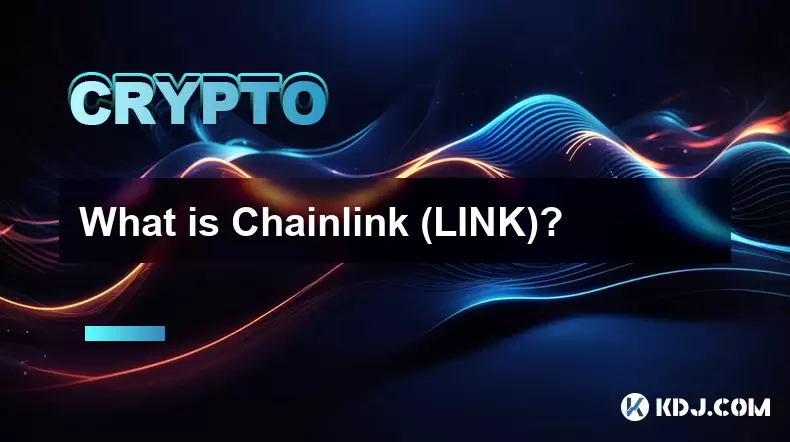
What is Chainlink (LINK)?
Jul 22,2025 at 02:14am
Understanding Chainlink (LINK): The Decentralized Oracle NetworkChainlink is a decentralized oracle network designed to bridge the gap between blockch...
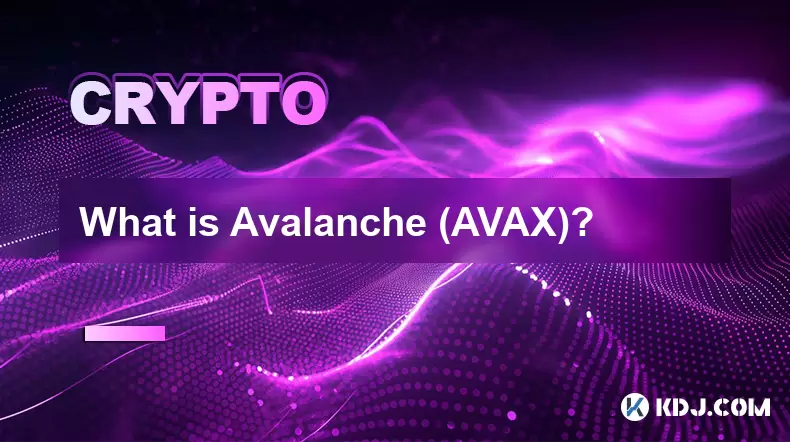
What is Avalanche (AVAX)?
Jul 22,2025 at 08:35am
What is Avalanche (AVAX)?Avalanche (AVAX) is a decentralized, open-source blockchain platform designed to support high-performance decentralized appli...
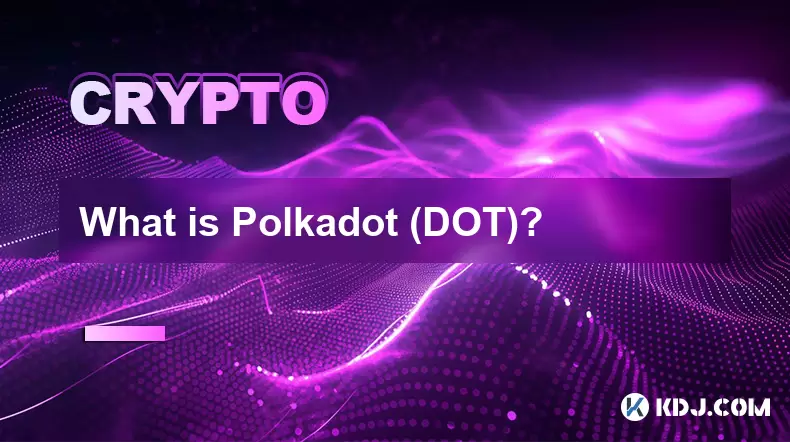
What is Polkadot (DOT)?
Jul 19,2025 at 06:35pm
Understanding the Basics of Polkadot (DOT)Polkadot (DOT) is a multi-chain network protocol designed to enable different blockchains to transfer messag...
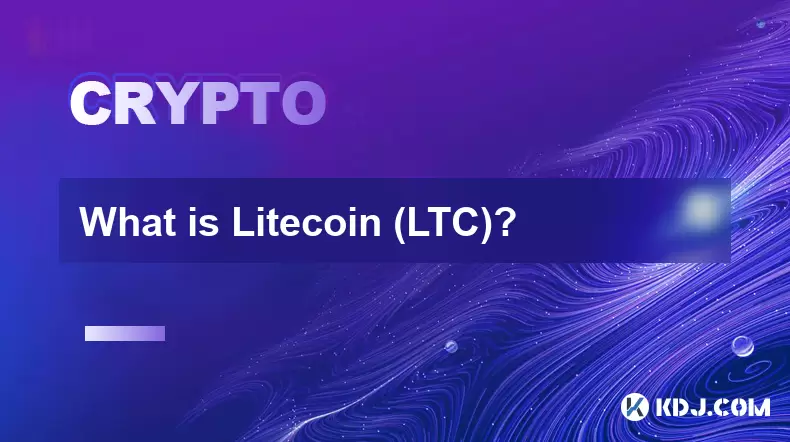
What is Litecoin (LTC)?
Jul 23,2025 at 11:35am
Overview of Litecoin (LTC)Litecoin (LTC) is a peer-to-peer cryptocurrency that was created in 2011 by Charlie Lee, a former Google engineer. It is oft...
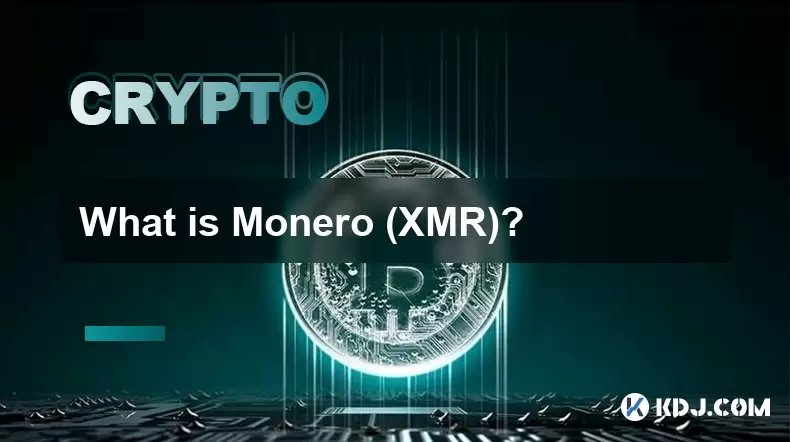
What is Monero (XMR)?
Jul 21,2025 at 10:07am
What is Monero (XMR)?Monero (XMR) is a decentralized cryptocurrency designed to provide enhanced privacy and anonymity for its users. Unlike Bitcoin a...
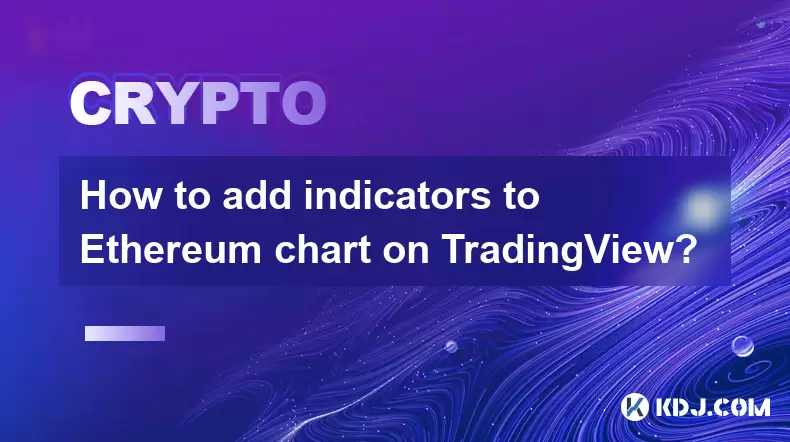
How to add indicators to Ethereum chart on TradingView?
Jul 19,2025 at 07:15am
What Is an Ethereum Chart on TradingView?The Ethereum chart on TradingView is a visual representation of the price movement of Ethereum (ETH) over a s...

What is Chainlink (LINK)?
Jul 22,2025 at 02:14am
Understanding Chainlink (LINK): The Decentralized Oracle NetworkChainlink is a decentralized oracle network designed to bridge the gap between blockch...

What is Avalanche (AVAX)?
Jul 22,2025 at 08:35am
What is Avalanche (AVAX)?Avalanche (AVAX) is a decentralized, open-source blockchain platform designed to support high-performance decentralized appli...

What is Polkadot (DOT)?
Jul 19,2025 at 06:35pm
Understanding the Basics of Polkadot (DOT)Polkadot (DOT) is a multi-chain network protocol designed to enable different blockchains to transfer messag...

What is Litecoin (LTC)?
Jul 23,2025 at 11:35am
Overview of Litecoin (LTC)Litecoin (LTC) is a peer-to-peer cryptocurrency that was created in 2011 by Charlie Lee, a former Google engineer. It is oft...

What is Monero (XMR)?
Jul 21,2025 at 10:07am
What is Monero (XMR)?Monero (XMR) is a decentralized cryptocurrency designed to provide enhanced privacy and anonymity for its users. Unlike Bitcoin a...

How to add indicators to Ethereum chart on TradingView?
Jul 19,2025 at 07:15am
What Is an Ethereum Chart on TradingView?The Ethereum chart on TradingView is a visual representation of the price movement of Ethereum (ETH) over a s...
See all articles
























